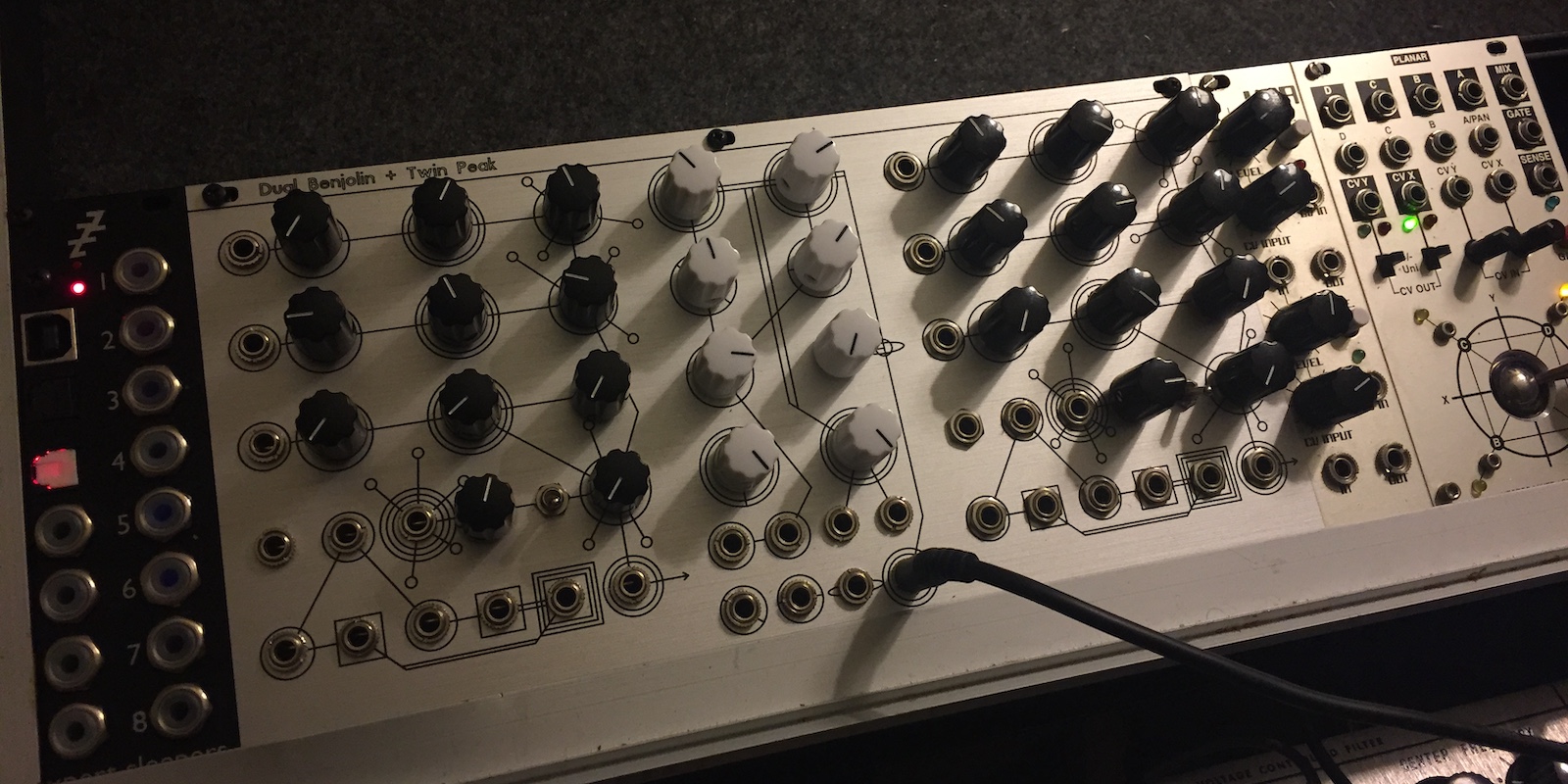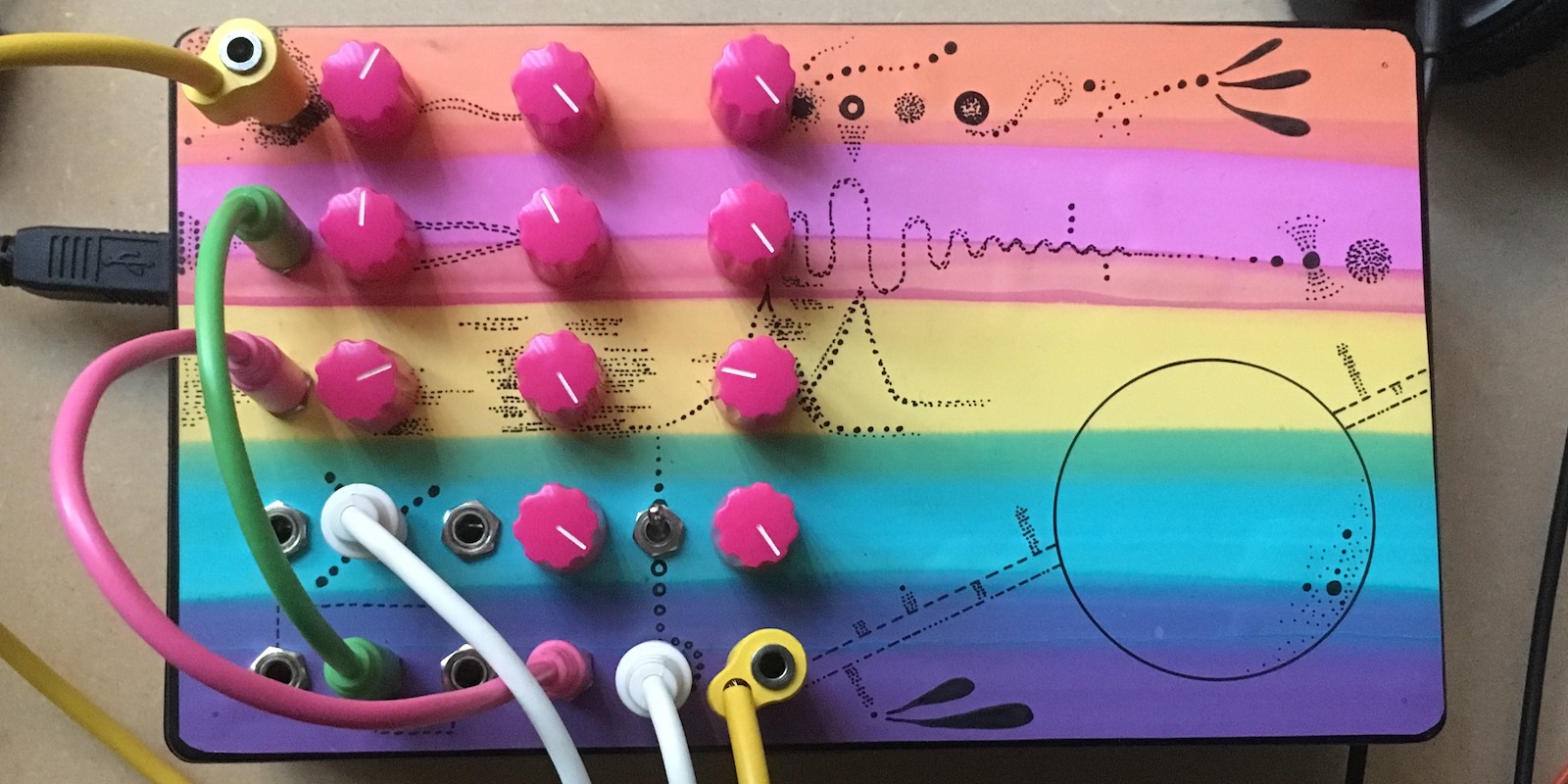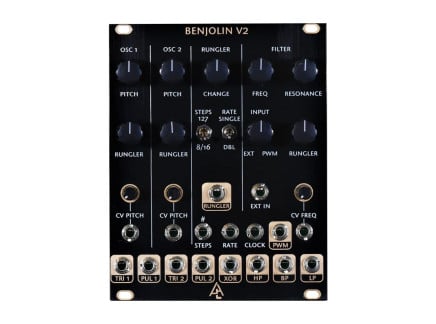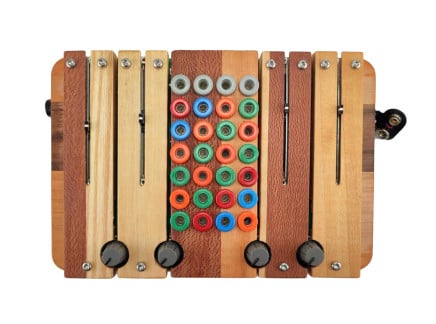As we navigate the fascinating and multi-dimensional world of sound synthesis, we encounter numerous innovators who have pushed the boundaries of instrument design and even stretched the common definitions of a synthesizer. Among these luminaries was Rob Hordijk—a Dutch synth designer and electronic music educator, known for his unique instrument design method, and ingenious creations. The inventor's passing in the fall of last year was an insurmountable loss for the synthesizer community, but he has left us with a wealth of designs, ideas, and concepts that will surely live on for generations to come. Hordijk's extensive repertoire of instruments included full-scale modular systems, and stand-alone synthesizers, among which one design stands out in particular: the Benjolin.
The Benjolin is an electronic musical instrument that assumes a multitude of forms, each reflecting its design principles rooted deeply in chaos theory. Featuring two oscillators, a resonant filter, and a chaotic voltage generator, the Benjolin presents a sonic palette that transcends traditional synthesis parameters, beckoning users to embark on explorations of untrodden sonic landscapes. Its output, while unpredictable and frequently oscillating between harmonious and discordant, presents both a challenge and inspiration. Its distinctive character imparts a sense of vivacity, often making the Benjolin feel less like a musical instrument and more akin to a sentient organism.
This article will delve into the Benjolin's architecture, exploring its operational intricacies and distinct sound generation techniques. We will also consider its place in the history of electronic music, examining how Hordijk's invention has influenced contemporary practices of instrument design, and performance. With this foundation, let's start by discussing the origins of the instrument, and uncover the creative journey that led to its development.
Origins: The Instruments Of Chaos
With a distinctive background in visual arts and systems engineering, Hordijk's approach to synthesizer design diverged from that of his contemporaries. He sometimes explicitly stated that his instruments were not intended for traditional keyboard playing. Instead, they emphasized user interaction over user control. A common theme in all of Rob Hordijk's work is a profound appreciation for chaos theory and its potential applications in music. Although he had contemplated such instruments since the 1980s, it wasn't until 2003 that Hordijk embarked on developing a stand-alone "chaotic" synthesizer, inspired by the burgeoning practice of circuit bending. His vision was to craft an instrument "bent by design," allowing users to engage with its unpredictable and dynamic responses without the need to break out their soldering irons.
After four years of development, Hordijk introduced the whimsically named Blippoo Box (image below, courtesy of Ryan Gaston). The instrument quickly gained popularity among the synthesizer community, particularly within the experimental/free improvisation scene. Hordijk was intrigued by the concept of a "mystery," and he found that electronic circuitry resonated with this notion. Users could never fully comprehend what transpired within the instrument or how electrons flowed between components. This enigmatic layer transformed interactions with such devices into an experience akin to engaging with a living creature rather than musical instruments in the conventional sense.
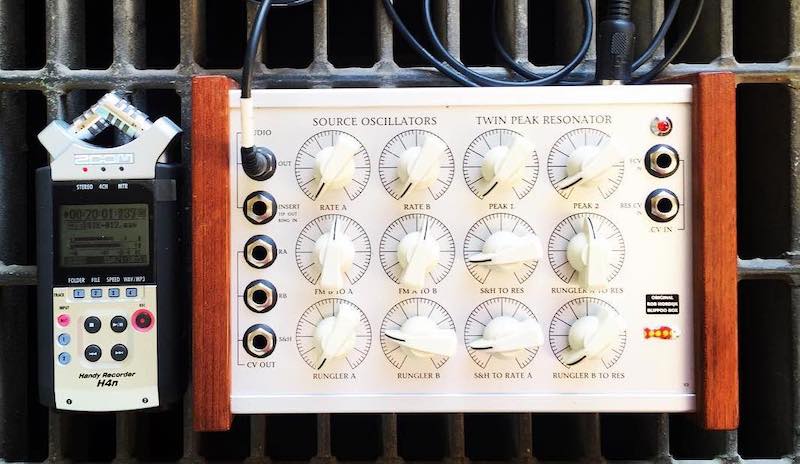
The Blippoo Box, characterized by its experimental and capricious nature, consisted of two main parts: a Twin Peak "resonator"—a dual-peak resonant bandpass filter known for its complexity and distinctive timbre, and the "chaotic core," a combination of cross-modulating oscillators, a sample-and-hold circuit, and Hordijk's signature "Rungler" circuit—an 8-bit shift register that derives clock and voltage signals from the two VCOs, respectively. The interplay between these two sections is a fundamental aspect of the Blippoo Box: the chaotic core generates modulation and excitation signals, and the resonator reacts, bursting into complex and intricate output patterns.
The Blippoo Box incorporated all the elements that would eventually be integral to the Benjolin's design. In essence, the Benjolin can be viewed as a Blippoo Box distilled to its bare essentials. However, when distinguishing between the two, it's crucial to understand Hordijk's unique intent behind each creation. The Blippoo Box was a deliberate fusion of craftsmanship, physical principles, and abstract sonic landscapes, intended from the outset to converge into a comprehensive, standalone musical instrument—a goal it resoundingly achieved. Conversely, the Benjolin was initially designed as an educational tool. However, it swiftly transcended its original purpose, evolving into a unique and highly valued instrument in its own right.
Repeat: Chaos Is Not Randomness
Before delving further into the narrative of the Benjolin, it is crucial to clarify a frequently misunderstood distinction. Chaos and randomness, though often used interchangeably in casual conversation, are distinct concepts, especially in the context of mathematics, physics, and by extension, music and sound synthesis. Randomness implies a lack of order, predictability, and pattern, with no correlations between successive events. It is fundamentally irreproducible—each instance of a random process will yield a different outcome.
Chaos, on the other hand, while appearing disorderly on the surface, is deterministic in nature. It arises from a deterministic system that is highly sensitive to initial conditions. You all may be familiar with this through the popularized concept of the "butterfly effect." Even minuscule changes in initial conditions can lead to vast differences in the system's output over time, making the system seem unpredictable. However, unlike randomness, a chaotic system is reproducible—if the initial conditions are replicated precisely, the system will produce the exact same outcome. Hordijk puts it in simple terms as patterns that are just too complex for our minds to identify. If you wish to learn more about the origins and intricacies of chaos theory, James Gleick's 1987 non-fiction Chaos: Making a New Science is a great resource.
The Blippoo Box and the Benjolin are embodiments of controlled chaos rather than pure randomness. Crafted around circuits that are exquisitely sensitive to the input controls, initial conditions, and interplay among various system components, they give rise to an expansive sonic landscape that, while appearing unpredictable and diverse, is intrinsically rooted in the deterministic behavior of the circuits. A pivotal element of these instruments is the Rungler circuit, which generates intricate, chaotic modulations, influencing the oscillators' and filters' behavior. However, these modulations are not random—they are shaped by the complex interactions within the circuit itself. The dance between predictability and unpredictability, order and chaos, forms a defining characteristic of Hordijk's designs, birthing instruments that are as fascinating to explore as they are enchanting to the ear. This is precisely the allure for improvising artists, where a subtle, seemingly insignificant gesture can resonate with profound sonic implications.
Benjolin: DIY Or Buy
In an interview with Darwin Grosse, Rob Hordijk reflected on the initial inspiration behind the Benjolin. In the early 2010s, he had noticed how many enthusiasts of the DIY synthesizer culture would embark on building kits but often became overwhelmed or stalled in their efforts, leaving their projects incomplete. In response to this, Hordijk set out to design a moderately complex circuit that could be assembled in a controlled DIY workshop. His aim was to foster a supportive and structured environment where participants could construct a unique, fully operational instrument to take home. This instrument could then be further personalized with distinctive enclosures. The outcome of this endeavor was the Benjolin, a name facetiously alluding to its tonal qualities hovering between those of a banjo and a violin.
In design, the Benjolin is a semi-modular synthesizer that, as previously discussed, shares a similar architecture with the Blippoo Box. While it omits the sample-and-hold circuit, and has a number of other crucial differences, it retains the dual voltage-controlled oscillators, a voltage-controlled filter, and of course, the characteristic Rungler (though the implementations of the Rungler in the Blippoo and Benjolin do slightly differ). This central feature of the Benjolin instigates complex, chaotic modulations, profoundly influencing the behavior of the oscillators and the filter. The visual aesthetic from one Benjolin to the next is up to the builder—so often, they look quite distinct (see above for Sarah Belle Reid's Rainbow Benjolin and Ryan Gaston's Dual Benjolin + Twin Peak filter, as examples).
The Benjolin offers a rich variety of outputs, including the triangle and pulse waves from each oscillator, an XOR output based on the state of the oscillators A and B, a PWM output that arises from comparing the two triangle waves of the VCOs, the rungler CV output, and the main output post-filter (this may come as a single output or three independent bandpass, highpass, and lowpass outputs). Furthermore, the instrument accommodates control voltage inputs for rungler, oscillator frequencies, and filter frequency cutoff, making it well-equipped for interfacing with other CV-capable gear in a studio. Furthermore, the rungler circuit is equipped with a switch for locking modulation sequences, enabling the user to create discernable loops and establish relatively stable patterns should they wish to do so.
Embodying Hordijk's design philosophy, the Benjolin stimulates interaction and experimentation, transforming sound creation into an exploratory and captivating journey. It presents a delightful fusion of unpredictability and musicality, with its allure residing in its capacity to continually surprise and engage the user. Each interaction with the Benjolin unfolds as a fresh experience, making it a truly unique instrument in the realm of sound synthesis.
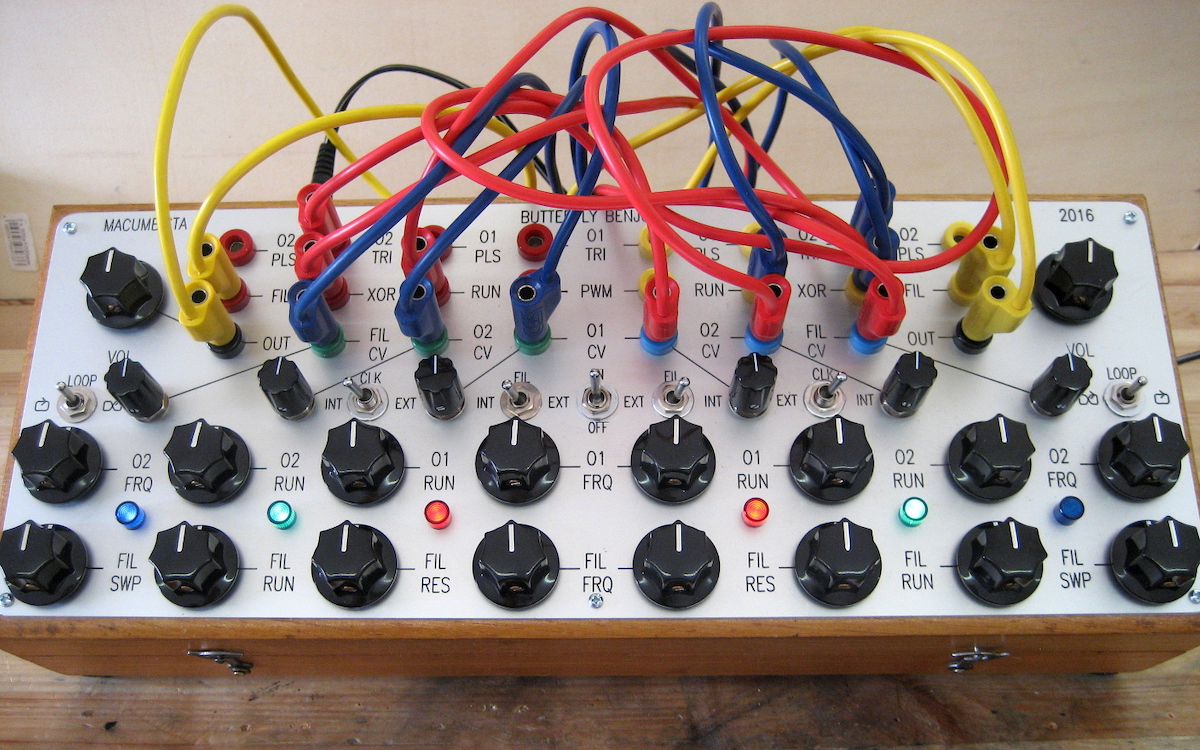
Following its introduction, the Benjolin quickly ascended to popularity within the electronic music community, particularly among artists in pursuit of unconventional and exploratory sound design instruments. However, not all enthusiasts were inclined or able to engage in the building process. Moreover, not everyone interested in the instrument had the opportunity to attend the workshops organized by Hordijk. As the years passed, Hordijk's increasingly demanding schedule rendered his participation in workshops impracticable. Consequently, with a high demand yet constrained by limited human resources, Hordijk licensed the design of the Benjolin to Eurorack company Epoch Modular as well as Macumbista (Derek Holzer). For several years, Epoch produced high-quality Benjolins in the Eurorack format until the company ceased production. Later, Holzer also offered limited runs of standalone Benjolins via macumbista.net (see above for a Macumbista dual "Butterfly" Benjolin) but gradually halted production altogether. From there, for a number of years, the Benjolin was largely embraced by the DIY community, with no particular company engaging in larger-scale production runs.
The Many Lives of the Benjolin
One intriguing aspect of the Benjolin is that while it's a comprehensive instrument, it lacks a defined visual aesthetic. Hordijk saw the circuit design as his contribution to the synth DIY community, leaving the physical form of the instrument up to the discretion of the user (we've seen multiple examples in this article, already). Though he preferred the idea of individuals constructing the instrument themselves, he was not opposed to someone purchasing a pre-built device if their primary interest was music making rather than engaging in the building process for whatever reason. Consequently, the Benjolin has been represented in various incarnations—it can be as simple as an unlabeled aluminum project box or as intricate as a meticulously organized panel enriched with additional modifications, such as the Dual-Benjolin.
Over the past few years, numerous companies have delved into the Benjolin design, either closely replicating the original or modifying it in various ways. A quick online search for Benjolin will yield a wealth of unique designs, some so distinctive that they appear unrelated. However, despite these differences in appearance, the spirited essence of the original design persists in each variation. It would be a monumental task to enumerate all the diverse manifestations of the instrument, but two recent iterations have sparked particular excitement.
Firstly, there's the Eurorack-format Benjolin V2, manufactured by After Later Audio. This version closely resembles the Epoch-style Benjolin module, with its spacious, clearly laid-out panel offering easy access to all crucial parameters. The ALA Benjolin is an ideal solution for those primarily working within the Eurorack environment, as it interfaces seamlessly with any modules in the system, delivering rich sonic textures and intricate control voltage signals simultaneously.
Secondly, the most recent offering from Peter Blasser's renowned wooden synth outlet, Ciat-Lonbarde, stands out as a visually unique rendition. The newest Ciat-Lonbarde instrument is a compact, standalone, banana-format instrument inspired by Hordijk's Benjolin, featuring a user-friendly layout with a grid of parameter knobs in the center and input/output sockets along two sides. Conveniently powered by either a wall adapter or a 9V battery, it serves as an ideal portable instrument. Charming and playful in its appearance, the Ciat-Lonbarde version retains the same untamed spirit of Hordijk's own Benjolin.
It is worth mentioning the shared idiosyncrasies between the instrument-making practices of Peter Blasser and Rob Hordijk. Chaotic systems play a significant role in both designers' creations. Deeply philosophical in their approaches, Blasser and Hordijk balance art, craftsmanship, engineering, music, and a penchant for mystery in their work. Peter often cites Rob as his mentor and has personally assisted him in organizing a workshop in the past. As such, it is difficult to envision a more fitting candidate to iterate on Hordijk's legacy, and the prospect of a Benjolin-like design reimagined through the lens of Ciat-Lonbarde and Peter Blasser's own fascinating imagination is truly exciting.
Bent by Design
In conclusion, the Benjolin stands as a testament to Rob Hordijk's innovative vision and dedication to crafting instruments that defy convention. It offers a unique blend of unpredictability and musicality, and its charm lies in its ability to surprise and engage the user, making each interaction a novel experience. As the synthesizer community continues to grow and evolve, the Benjolin's diverse manifestations and its impact on electronic music and sound synthesis will undoubtedly persist. It remains an inspiring example of how the combination of artistic vision, expertise, and a passion for exploring the unknown can result in a truly captivating and versatile instrument.


